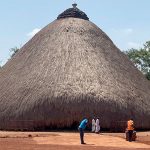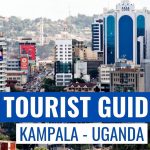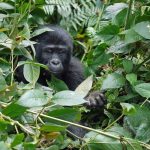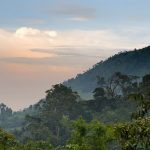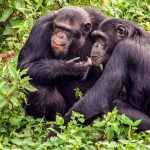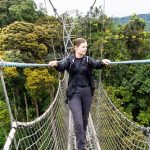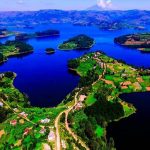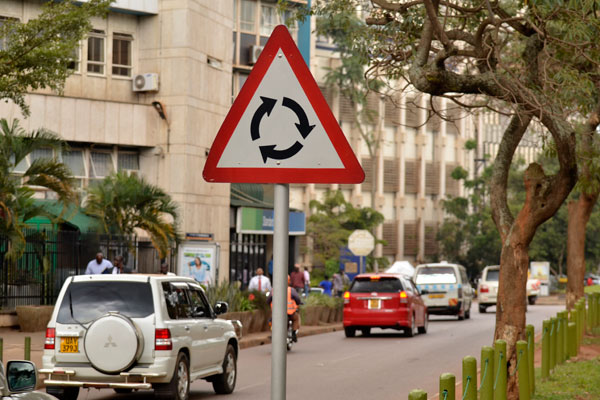Kampala is the Capital city and the business district of Uganda. It is spread over many hills and enjoys pleasant weather. It is one of the fastest growing cities on the African continent. Its architecture is a mixture of the modern, the colonial and the Indian buildings. To the south is Lake Victoria, the world’s second largest fresh water lake and the source of the longest river in the world, the River Nile.
Before the arrival of the British colonialists, the Kabaka of Buganda had chosen the zone that would become Kampala as a hunting reserve. The area, composed of rolling hills with grassy wetlands in the valleys, was home to several species of antelope, mainly Impalas. When the British arrived, they called it “Hills of the Impala”.
Where to Stay
Kampala city is composed of accommodation facility such as; Emin Pasha, Sheraton, Hotel equatorial, Africana, Fair way, Fang Fang, Grand Imperial, Serena, Namirembe guest House to mention but a few, various restaurants like Afro Caribbean Restaurants, Chinese, Continental, kati kati, Ethiopian, French, German, Indian, Ugandan, Italian, Lebanese, Thai, Korean, Japanese plus fast food restaurants.
Kampala – The Land of Impalas
Famous for the Impala ( a species of antelopes), the area that was later to be called Kampala was gazetted by Kabaka Mutesa I. (King of Buganda) in the 1880s as one of his favourite hunting grounds.
It later grew as the capital of Buganda Kingdom with the kingdom’s headquarters in Bulange – Mengo.
Kampala is now the capital and biggest city in Uganda with a population of about 1.7 million inhabitants. It is fast becoming one of the famous destinations in Africa.
History of Kampala
The origins of the Kampala city go back to 1891 when Kabaka of Buganda had his court on Rubaga and Mengo hills.
The town that grew from colonial and royal resting place achieved municipal status in 1950 and became a city’ in 1962.
Today, as you stand on the hills of Kampala, the City provides magnificent evergreen trees, gently disrupted by red-tiled villas, green iron-roofed bungalows, as well as taller modern city profiles that give way to attractive views of the surrounding country side and nearby Lake Victoria.
Kampala city has gone through a series of changes – many of which have been more of destruction than development. This has been due to our unfortunate history of civil wars and mismanagement. However, in the past years a number of changes have been taking place in Kampala and we are glad to present you a glimpse of how Kampala city looks like today in Year 2000
Kampala Today
Kampala was named the 13th fastest growing city on the planet, with an annual population growth rate of 4.03 percent by City Mayors. Kampala has been ranked the best city to live in East Africa ahead of Nairobi and Kigali according to Mercer, a global development consulting agency based in New York City. Today, greater Kampala stands on at least 21 hills. You can be taken through the prominent hills that form the modern day capital and their signature to the city’s political and socio-economic life, starting with the original seven. These include; Mengo, Rubaga, Namirembe, Makerere, Kololo, Nakasero, and Kampala (Old K’la).
Best Places to Visit in Kampala
- Kasubi Tombs
- St. Mary’s Cathedral Lubaga
- Gaddafi National Mosque in Kampala
- St. Paul’s Cathedral Namirembe
- Mackay Caves Nateete
- Bulange Mengo
- Twekobe – Kabaka’s Palace aka Lubiri
- Makerere University
Hills of Kampala
Of the seven hills on which the city of Kampala is considered to be built on, the first in the order of historical importance is the Kasubi Hill. Bordered by Lubya in the west & Makerere in the east, Kasubi is located northwest of the central business district of Kampala.
The history of Kasubi dates back to way before 1856 when the hill was known by the name Nabulagala.
It was only when Kabaka Muteesa I Mukaabya relocated his palace to Nabulagala that the hill was renamed to Kasubi Hill. It is for this reason that many Buganda traditionalists often refer to the hill as Kasubi-Nabulagala or just use the two names interchangeably.
One major reason for Kasubi Hill to be such a historically important hill is attributed to be the world famous Kasubi Tombs. It is said that, Kabaka Muteesa I Mukaabya after his death in the year 1884 became the first Kabaka to be buried at Kasubi. The place has since then become the official burial site of the royal Buganda monarchy.
Today the Kasubi Royal Tombs are considered synonymous to the cultural heritage of Kampala & are recognized as a significant World Heritage Site. The tombs are great exemplary pieces of the skilled African architecture & cultural heritage of the Buganda people.
The People of Kampala
Kampala has a diverse ethnic population. The city’s ethnic makeup has been defined by political and economic factors. A large number of western Ugandans mainly the Banyankole moved to the city in the new government of Yoweri Museveni. Although many Kampala residents have been born and brought up in the city, they still define themselves by their tribal roots and speak their ancestral languages. This is more evident in the suburbs where tribal languages are spoken widely alongside English, Luganda and Swahili. In addition to the Baganda and Banyankole, other large ethnic groups in Kampala include the Basoga, Bafumbira, Batooro, Bakiga, Alur, Bagisu, Banyoro, Iteso, Langi and the Acholi
Guided Tours in Kampala
Kampala is As soon as you are in Kampala, expect to see the Kasubi tombs, where the remains of the Kings of Buganda were buried. There is the Uganda Museum, Nommo art gallery, National Theatre, Cathedrals that is; Rubaga and Namirembe, Parliament of Uganda to mention but a few.
There is also the Ndere center, a prominent cultural centre in the Kampala area of Kisasi that aims to promote Ugandan and African cultural expressions through music, dance and drama. As an instrument found in all cultures, it is chosen as a peaceful symbol of the universality of cultural expressions. The Ndere centre is famous for its Ndere troupe, a music and dance troupe that perform several nights every week at the centre showcasing music and dance from all over Uganda as well as Rwanda and Burundi.
While in Kampala, you can go for shopping in different places. Super Markets include; Shoprite, Capital Shoppers Delight, Game Stores , Kwiksave Convenience, Millennium, Shopper’s Paradise, Embassy Supermarket, Payless, Nakumatti, Boutiques.
Many art Galleries and crafts are found within kampala where tourists can buy various hand made crafts such as Uganda Crafts 2000 Ltd, Gallery Okapi, Makerere School of Fine Art, Nommo Gallery, Rwenzori Crafts, Tulifanya Art Gallery, Banana Boat, Aada Africa Art Gallery
Other features of the city include the Uganda Museum, the Ugandan National Theatre, Nakasero Market and St. Balikuddembe Market known as the Owino Market. Kampala is also known for its nightlife which includes several casinos. Kampala hosts a Bahai House of Worship known as the mother temple of Africa situated on Kikaya Hill.
In terms of sports, Kampala is home to the City Oilers, one of East Africa’s top basketball teams. It is the only East African team that competes in the FIBA Africa Clubs Champions Cup. The Oilers play their home games in the MTN Arena which is based in Kampala’s Lugogo Area.

